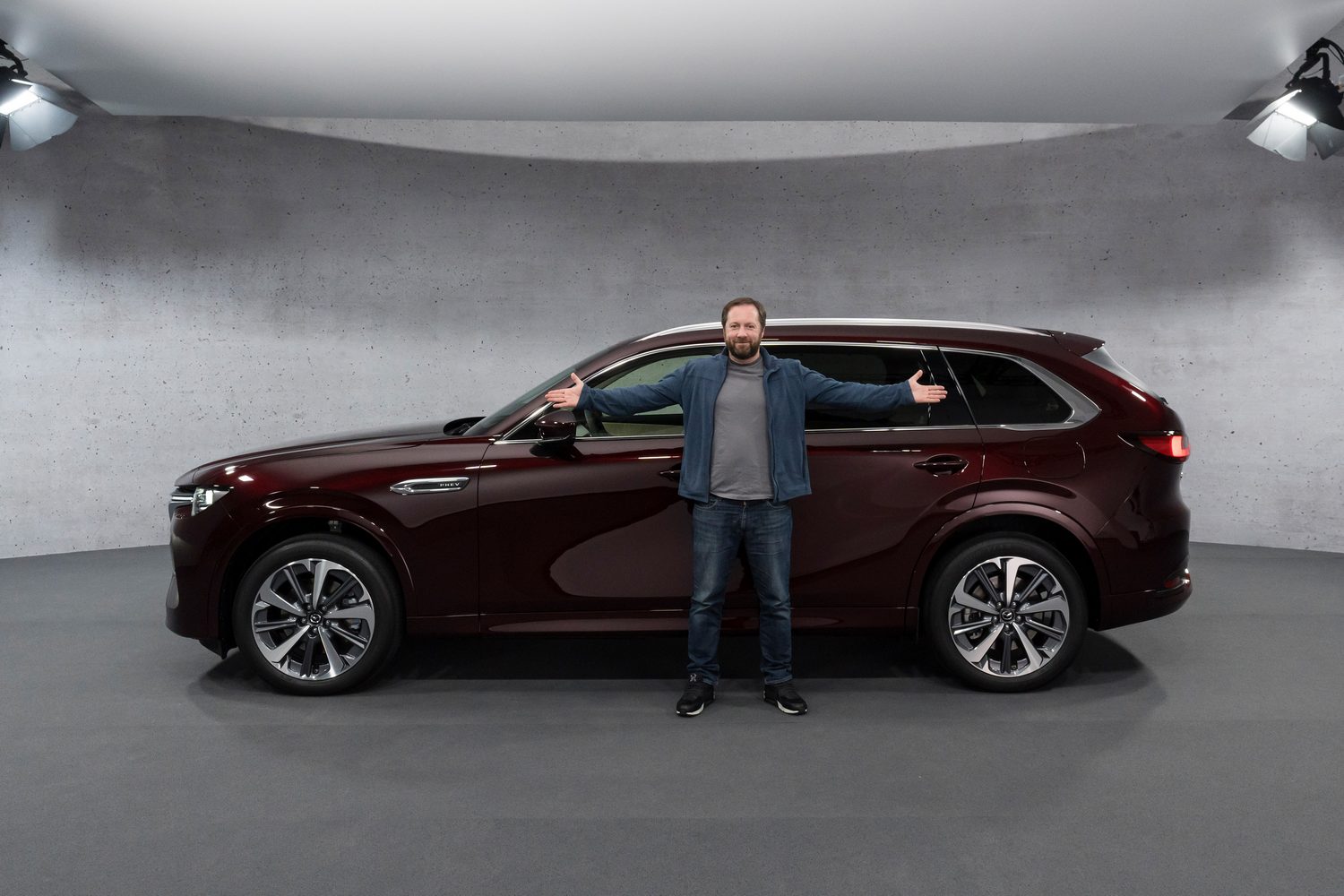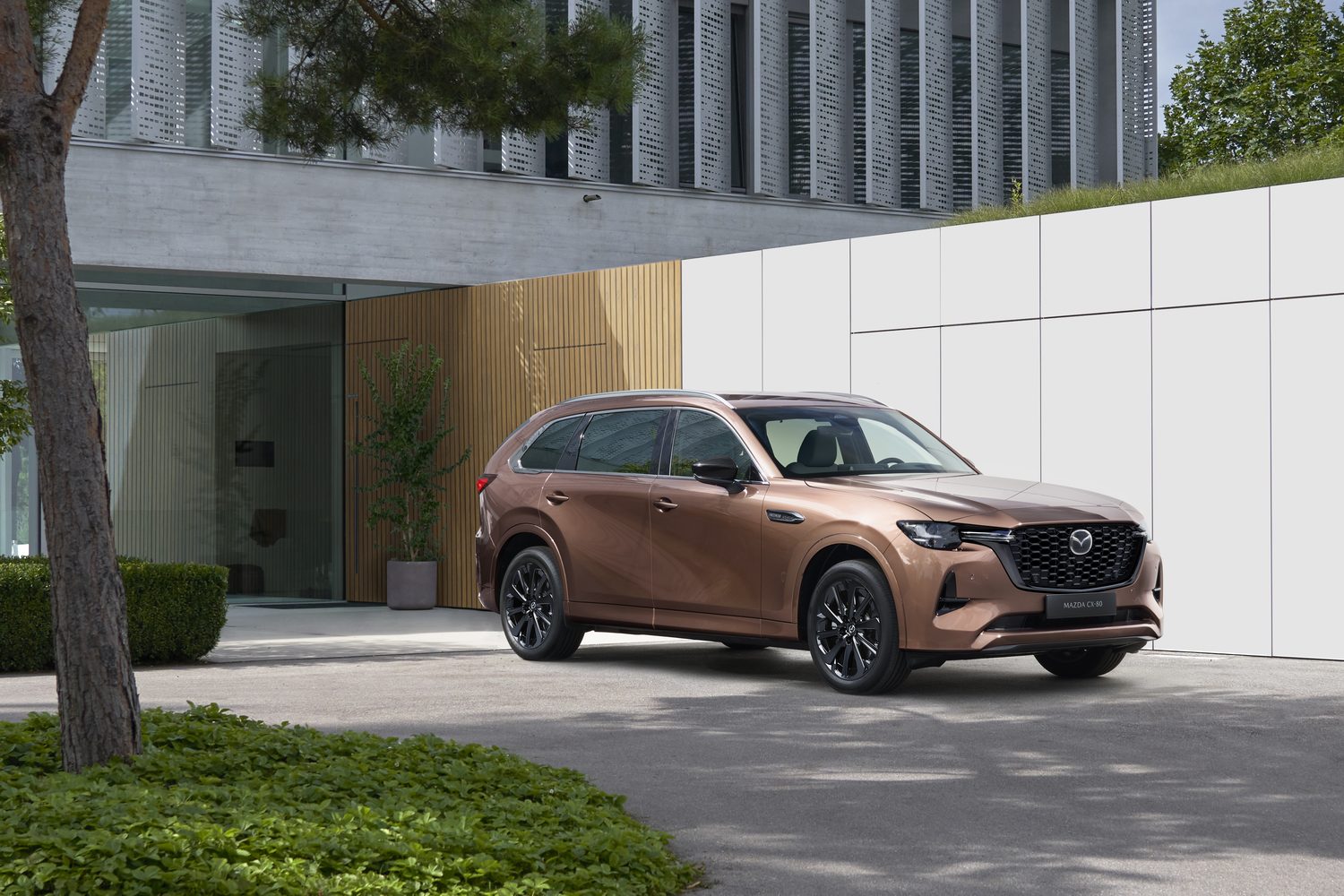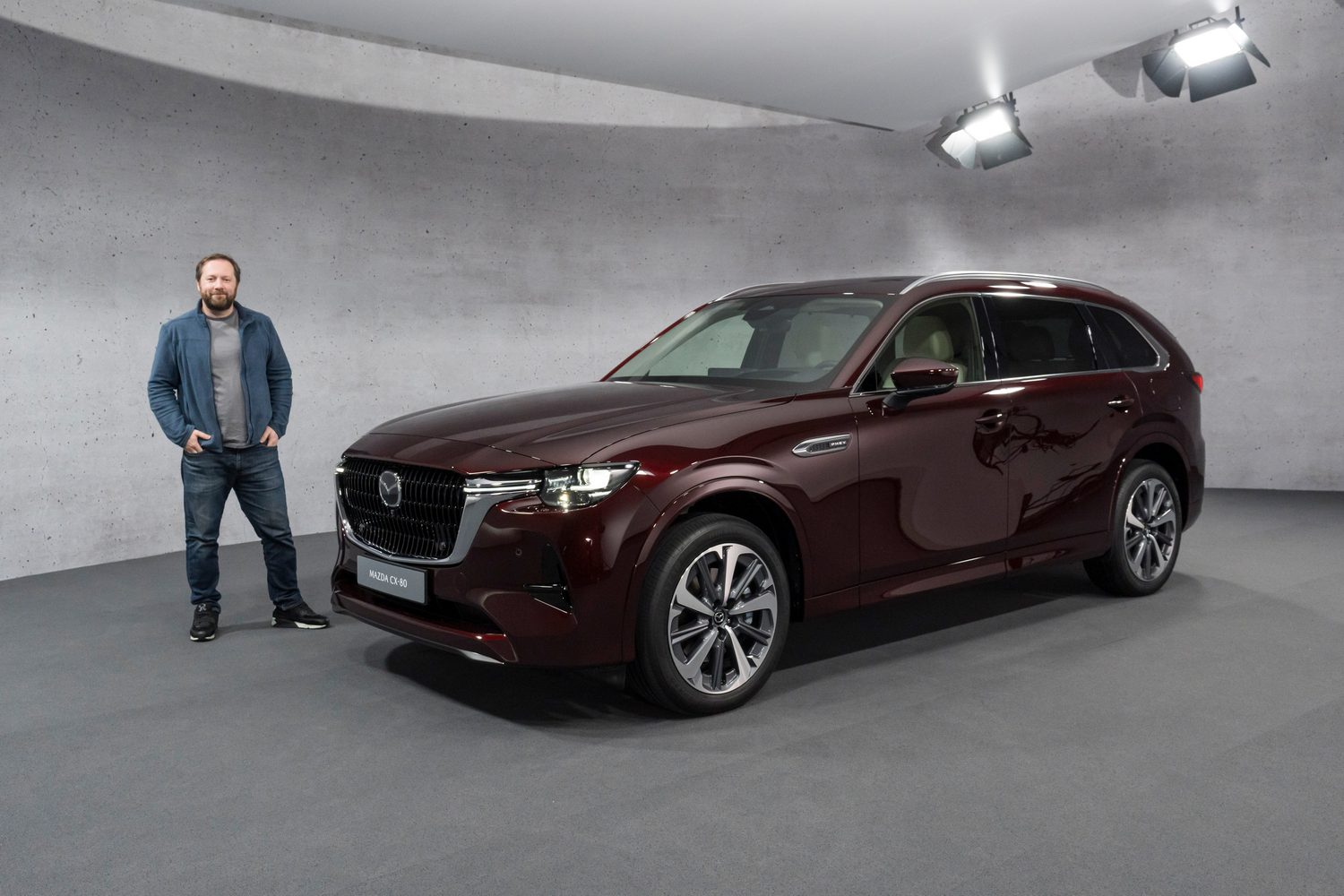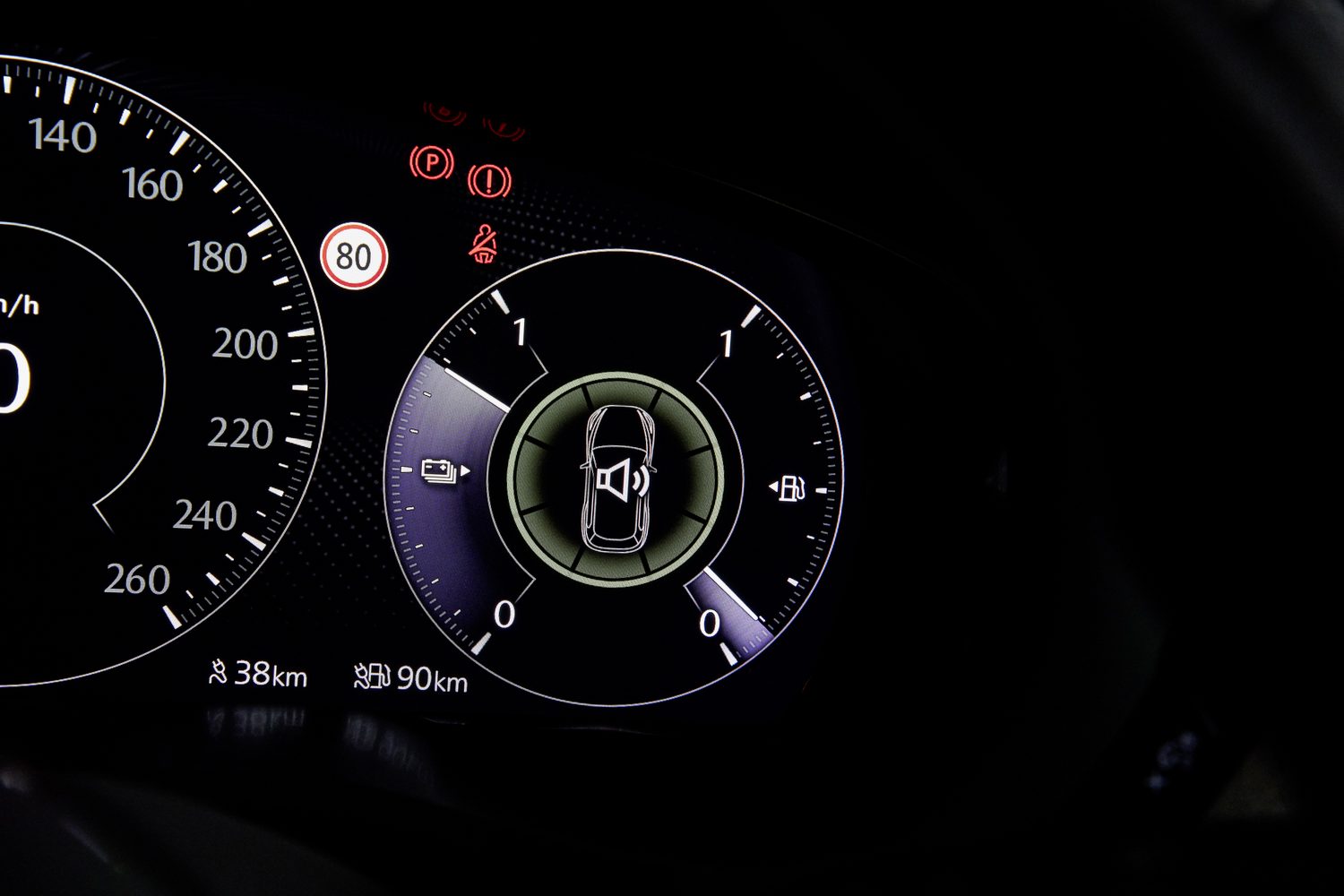Mazda is adding a larger, longer three-row SUV based on the CX-60 called the CX-80. The CX-80 opens Mazda up to a whole new audience of prospective buyers who want the versatility and practicality that a seven-seat SUV can offer. It will compete against models such as the Toyota Highlander, Skoda Kodiaq and more premium options such as the Volvo XC90.
The CX-80 has many of the same design details as the CX-60, with a more classical style that uses a long bonnet and cab-rearward profile. The wheelbase has been extended by 250mm, creating more interior space and enabling easier ingress and egress. The roofline has also been extended without sloping to maximise the amount of headroom for those in the rearmost seats. Mazda states that adults measuring up to 1.7 metres can fit comfortably into the third row.

Obvious design changes occur at the CX-80’s rear and include the omission of any visible exhaust garnish. Instead, the exhaust pipes exit behind the bumper and out of sight. Metallic-grey 20-inch alloy wheels create a nice visual balance and work well with the CX-80’s proportions. In terms of overall size, the CX-80 measures just under five metres in length at 4,995mm and is 1,890mm wide and 1,710mm tall.
A new colour for a new era
A new colour called Melting Copper joins the range of nine exterior paint options. Artisan Red becomes the brand’s new signature colour as Mazda shifts away from Soul Red. The Japanese company continues to place a strong emphasis on design, and there are some lovely details in this model, such as the use of thicker chrome mouldings around the extended side windows to highlight the difference between its two large SUVs.

More space inside
The CX-80 becomes the most spacious car in Mazda’s line up and will be available with three cabin layouts: a six-seat version to allow a walk-through space to the third row; a six-seat version with a centre console; and a seven-seat variant. The second-row bench in the seven-seat CX-80 can slide up to 120mm, with a seat recline range from 15 to 33 degrees. One-touch folding rear seats make it easier to get into the third row.
While the emphasis is on creating a comfortable third row for passengers, the CX-80 maintains a usable boot volume of 258 litres when all seats are in place. Should that third row not be needed, the seats can fold flat, boosting luggage capacity to 687 litres. With all seats folded, the capacity is 1,971 litres.
Up front, there is no change to the look and layout from that of the Mazda CX-60. Material quality and construction are to a high standard. Among the materials available inside are real maple wood, Nappa leather and chrome detailing. Of note is the ‘Msusbu’ stitching which takes inspiration from the centuries-old art of Japanese knot tying.
There are plenty of modern features, too, such as the Driver Personalisation System, which can calculate the optimum driving position based on your height and eye level, as detected by the driver monitoring camera. It then adjusts the steering wheel, seat, door mirrors and head-up display accordingly. This system can store settings for up to six people, so if you happen to share the car with someone else, it will readjust to each driver.
In front of the driver is a 12.3-inch digital instrument display, and there is a 12.3-inch touchscreen that supplements Mazda’s native infotainment system with Android Auto and Apple CarPlay.
Other conveniences include a 15-watt wireless charging pad for mobile devices and USB-C ports for every seat to ensure nobody has to go without a way to charge their device. The plug-in hybrid model can be equipped with an optional 1,500-watt AC power supply that draws from the lithium-ion battery and can power external appliances.
Mazda’s choice of electrified engines for the CX-80
Following a similar line as the smaller CX-60, the Mazda CX-80 will be available to order with either a diesel engine or a petrol plug-in hybrid. The 254hp ‘eSkyactiv D’ is a 3.3-litre inline six-cylinder diesel that is augmented with a 48-volt mild-hybrid system for smoother stop/start functionality and fuel saving. It features Mazda’s innovative DCPCI (Distribution-Controlled Partially Premixed Compression Ignition) system that maximises the engine’s efficiency.
The diesel CX-80 can accelerate from 0-100km/h in 8.4 seconds, but the more appealing prospect for some is its towing ability. With 550Nm of torque from 1,500rpm, it can pull a 750kg unbraked trailer and up to 2,500kg when the towed load has brakes.
If diesel isn’t your thing, there’s the plug-in hybrid that combines the ‘Skyactiv-G’ 2.5-litre four-cylinder petrol engine with a 129kW electric motor and a 17.8kWh lithium-ion battery. With system maximum outputs of 327hp and 500Nm, it is the faster of the CX-80 models, taking 6.8 seconds to accelerate from 0-100km/h, though manages CO2 emissions of just 36g/km. On the electrical side of the powertrain is an official battery driving range of 60 kilometres. The WLTP average consumption is a modest 2.0 litres/100 kilometres.
Both engines are fitted with an eight-speed automatic gearbox, and Mazda’s ‘i-Activ’ all-wheel-drive system has four drive modes, including EV mode for the PHEV. Mazda uses a double wishbone front and multi-link rear suspension setup. With this setup, Mazda’s Kinematic Posture Control (KPC) system can brake the inside rear wheel in a corner to draw the car downwards, reducing body lean.
Five equipment levels of the Mazda CX-80
Mazda plans to offer the CX-80 across five grade levels: Exclusive-line, Homura, Takumi, Homura Plus and Takumi Plus. The seven-seat layout is standard on all, while the Homura and Homura Plus models are available with the six-seat setup featuring two second-row captain’s chairs. The Takumi Plus adds to that by offering the captain’s chairs with a centre console. Other standard features across all models are an eight-way adjustable driver’s seat and a six-way adjustable front passenger seat.
Irish pricing for the Mazda CX-80 will be announced closer to the car’s arrival in Ireland later this year.



